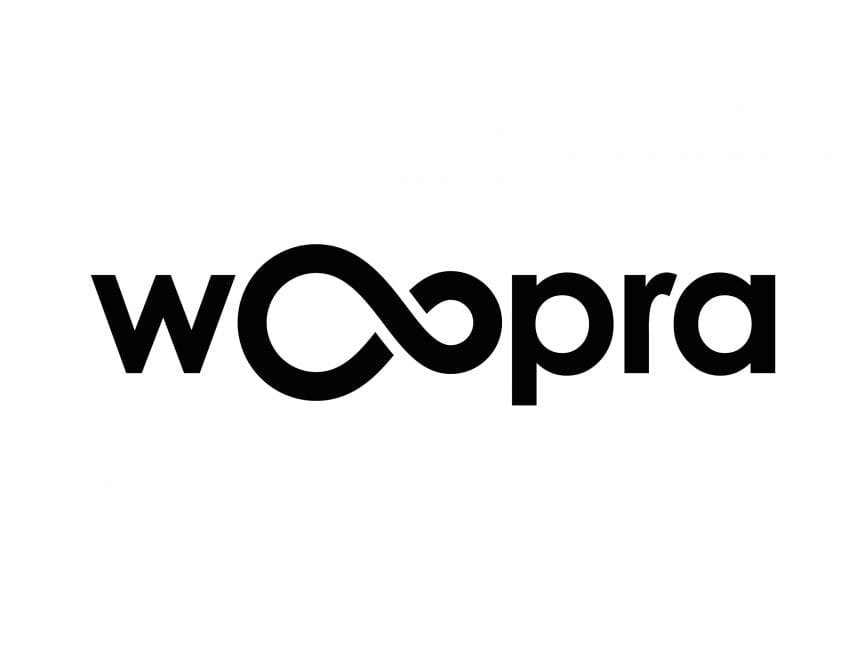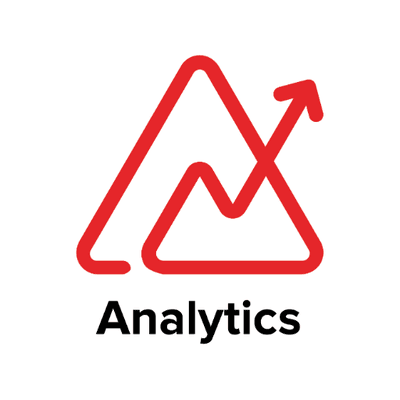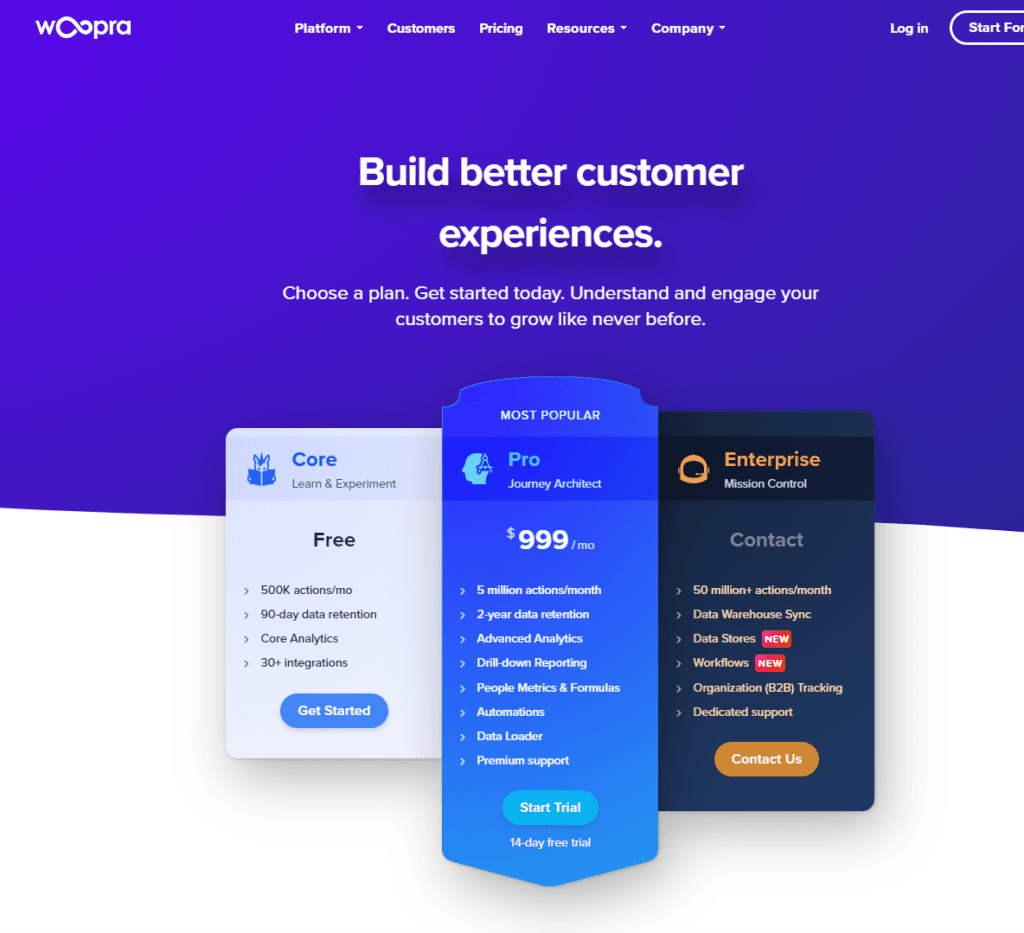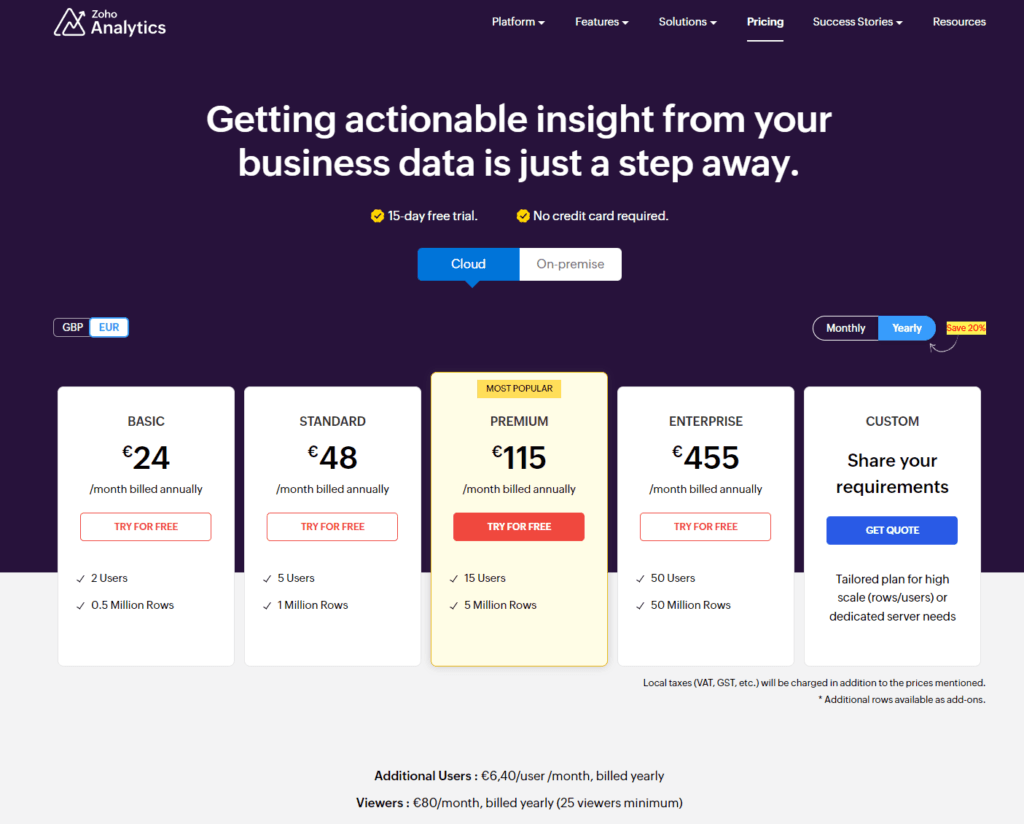In today’s digital-first landscape, navigating the sea of analytics tools can be daunting. Two standout beacons in this vast ocean are Woopra and Zoho Analytics, each promising to illuminate the path to data-driven insights. But as you chart your course, the pivotal question arises: Which tool is the beacon for you? Whether you’re steering a nimble startup or captaining an established enterprise, the choice between Woopra and Zoho Analytics could set the direction for your journey toward understanding customer behavior, optimizing user experience, and driving growth. Let’s set sail with a critical comparison: Data Integration and Management.
Woopra | Zoho Analytics |
|---|---|
| G2 Score – 4.4 out of 5 stars | G2 Score – 4.3 out of 5 stars |
| TrustRadius Score – 5.8/10 | TrustRadius Score – 8.1/10 |
Data Integration and Management
In the quest for analytics excellence, the prowess of a tool in integrating and managing data stands as the cornerstone. It’s here that the true capabilities of Woopra and Zoho Analytics begin to differentiate, each offering unique advantages tailored to distinct needs.
Woopra:
Woopra prides itself on offering a seamless, end-to-end analytics solution focused on customer journey analytics. Its strength lies in the ability to track every customer interaction across multiple touchpoints in real-time, providing a holistic view of the customer journey.
Woopra’s integration capabilities are designed to pull in data from various sources, including web, mobile, email, and support tools, to create a unified customer profile. This integration is not just about collecting data but making it actionable, enabling businesses to trigger automations, personalize communications, and enhance customer experiences based on comprehensive insights.
Zoho Analytics:
On the other side, Zoho Analytics stands out for its broad integration ecosystem, supporting a wide array of data sources, including files, feeds, databases, cloud and on-premise applications, and even custom applications via APIs. What sets Zoho Analytics apart is its deep integration within the Zoho ecosystem, allowing for an almost unparalleled ease of data flow between Zoho apps.
This synergy makes Zoho Analytics an attractive option for businesses already vested in the Zoho suite, looking to leverage their data across CRM, customer support, marketing, and more. Beyond its native ecosystem, Zoho’s flexibility in integrating with external applications ensures businesses can maintain a comprehensive analytics view without being confined to a single vendor.
Ease of Use and Learning Curve
The effectiveness of an analytics platform is not solely determined by its technical capabilities but also by how accessible it is to the individuals who will use it daily. The ease with which team members can navigate the platform, understand its features, and extract needed insights plays a significant role in its adoption and the value it brings to an organization.
Woopra:
Woopra is designed with a focus on user experience, aiming to demystify data analytics and make it accessible to users across the organization, regardless of their technical expertise. Its interface is intuitive, with clear navigation and visualization options that simplify the process of tracking customer journeys and analyzing user behavior.
Woopra emphasizes real-time insights and automations, which can be set up with minimal effort, allowing teams to act on data quickly. This focus on usability reduces the learning curve, enabling faster onboarding of team members and encouraging broader use within the company.
Zoho Analytics:
Zoho Analytics also prioritizes user accessibility but brings it into the context of a more comprehensive analytics suite. The platform offers a drag-and-drop interface for creating reports and dashboards, making data visualization straightforward for users of all skill levels. Zoho Analytics includes a variety of templates and pre-built reports, further easing the initial setup and ongoing use.
However, its extensive features and capabilities, designed to cater to a wide range of business intelligence needs, might present a steeper learning curve for users seeking to leverage its full potential. Zoho provides extensive support through tutorials, forums, and customer support to help users navigate the platform.
Innovative Features and Future Roadmap
The rapid pace of digital transformation mandates that analytics tools not only address current business needs but are also poised for future trends and technologies.
Woopra:
Woopra stands out for its dedication to pioneering customer journey analytics, continuously enhancing its platform with features that offer deeper insights into user behavior and engagement. Innovations such as dynamic segmentation, predictive analytics capabilities, and real-time automation workflows exemplify Woopra’s commitment to staying at the forefront of analytics technology.
These features enable businesses to not just analyze past and present customer interactions but also anticipate future behaviors and trends. Looking ahead, Woopra’s roadmap suggests a continued focus on leveraging AI and machine learning to provide even more predictive insights and personalized engagement strategies, ensuring businesses can stay agile and proactive in their marketing and product development efforts.
Zoho Analytics:
Zoho Analytics, on the other hand, underscores its evolution with a broad set of features that cater to a diverse range of business intelligence needs across different industries. Recent innovations include augmented analytics powered by Zia, Zoho’s AI assistant, offering natural language processing for generating insights and the integration of BI and analytics capabilities across the Zoho suite for seamless operational insights.
Zoho Analytics’ roadmap indicates a strategic emphasis on enhancing AI-driven analytics, improving data visualization tools, and expanding integrations to ensure businesses have a comprehensive, cutting-edge analytics solution. These advancements are designed to empower users with more intuitive, actionable insights across all facets of their operations, from sales and marketing to finance and HR.

Related: Check out our free SEO suite

Customization and Flexibility
The ability to tailor an analytics solution to fit your specific business needs and the flexibility to adapt to changing requirements over time are crucial for maintaining the relevance and effectiveness of your analytics efforts. This includes everything from customizing data collection methods to personalizing reports and dashboards to reflect key metrics unique to your business operations.
Woopra:
Woopra offers a high degree of customization, particularly in the way it allows businesses to track and analyze customer behavior across various touchpoints. It enables the creation of custom events and properties that reflect the unique interactions users have with your product or service.
Additionally, Woopra’s flexibility is evident in its real-time analytics and the ability to trigger actions based on customer behavior, providing businesses with the agility to respond quickly to emerging trends or issues. This level of customization and flexibility makes Woopra especially suited for companies that need to closely monitor and react to customer interactions in real-time, offering tailored experiences based on nuanced insights.
Zoho Analytics:
Zoho Analytics, on the other hand, emphasizes customization in the context of data visualization and reporting. It offers extensive options for creating custom reports and dashboards, with a wide array of visualization tools that can be tailored to present data in the most impactful way.
Zoho Analytics also stands out for its flexibility in integrating data from various sources, ensuring businesses can bring together and analyze information across their entire operations. This broad capability for customization and integration makes Zoho Analytics a versatile tool for businesses that require detailed insights across different aspects of their operations, from sales and marketing to finance and customer support.
Pricing and Value Proposition
The cost of these tools and the return on investment they promise play a decisive role in determining which solution aligns best with your business objectives and budget constraints.
The Pricing structure of an analytics tool is often reflective of its target market, feature set, and scalability. It’s not just about the initial cost but also about evaluating the long-term investment and how the tool’s capabilities can drive growth, efficiency, and strategic insights within your organization.
Woopra:
Woopra positions itself with a pricing model that caters to a range of business sizes, from startups to large enterprises. It typically offers a tiered pricing structure, starting with a basic plan that covers essential features suitable for smaller businesses or teams just beginning to explore analytics. As needs become more sophisticated, Woopra provides more advanced plans that include increased data points, more detailed customer journey analytics, and additional customization options.
The Value Proposition of Woopra lies in its specialized focus on understanding customer behavior through detailed journey analytics, offering businesses the tools to create more personalized user experiences and directly impact customer retention and conversion rates.
Zoho Analytics:
Zoho Analytics also employs a tiered pricing model, designed to accommodate businesses at different stages of growth and with varying analytics needs. From affordable plans for small teams to more comprehensive options for enterprises, Zoho Analytics aims to provide scalable solutions.
Its value proposition hinges on offering a wide-ranging analytics platform capable of integrating data from multiple sources to deliver deep insights across various aspects of business operations. Zoho Analytics appeals to organizations looking for an all-encompassing analytics tool that can support data-driven decision-making across the entire enterprise.
Approach to Data Privacy and Compliance
In an era where data privacy regulations such as GDPR and CCPA are becoming increasingly stringent, the way an analytics platform handles data privacy and compliance can significantly impact your business operations and reputation.
Woopra:
Woopra’s approach to data privacy and compliance emphasizes user consent and data protection. It offers features designed to help businesses comply with various data protection regulations, enabling them to manage user data responsibly.
Woopra provides tools for managing consent across customer touchpoints, ensuring that data collection practices align with user preferences and legal requirements. This focus on privacy by design means that businesses can tailor their data collection and analysis practices in Woopra to meet the specific compliance needs of their industry and operational regions, offering peace of mind and reducing the risk of non-compliance.
Zoho Analytics:
Zoho Analytics, part of the larger Zoho suite, integrates its data privacy and compliance features across its product ecosystem. Zoho’s commitment to data protection is evident in its security practices, data encryption methods, and compliance certifications. The platform ensures that data is handled securely, with options for businesses to control data access, audit logs, and comply with regional data protection laws.
Zoho’s global footprint and experience with businesses across various jurisdictions make it a robust option for organizations looking for an analytics solution that not only offers comprehensive data insights but also aligns with global data privacy standards.
Pricing
Woopra:

Zoho Analytics:

Conclusion
Concluding our exploration into choosing between Woopra and Zoho Analytics, it’s vital to remember that the decision hinges on aligning the tool’s capabilities with your business’s specific data analytics needs, goals, and resources.
Woopra specializes in providing businesses with a laser-focused lens on customer interactions across various touchpoints, enabling a nuanced understanding of the customer journey. This specialization is ideal for companies prioritizing direct, actionable insights into user behavior to drive engagement and personalization strategies. The platform’s intuitive design and real-time analytics capabilities make it a strong candidate for organizations looking to quickly translate data into meaningful customer experiences without requiring extensive technical expertise.
Zoho Analytics, with its wide-ranging analytics and reporting tools, offers a comprehensive solution for businesses seeking to consolidate data from multiple sources into a unified analytics platform. Its strength lies in delivering versatile business intelligence insights that can inform decisions across various departments. Zoho Analytics stands out for its scalability and the depth of its integration capabilities, especially within the Zoho ecosystem, making it a compelling option for businesses seeking an all-encompassing approach to data analysis.
Read Next:
- GetResponse vs Zoho Campaigns: The Best Email Marketing Tool for 2024
- AWeber vs ActiveCampaign: The Best Email Marketing Tool
- Constant Contact vs Campaigner: Best Email Marketing Tool
- GetResponse vs Omnisend: The Best Email Marketing Tool for 2024
- AWeber vs Benchmark Email: The Best Email Marketing Tool






















Comments are closed.